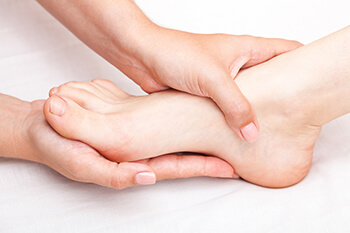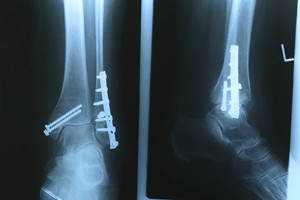
The first sign of an ingrown toenail is pain that continues to get worse. This will be followed by swelling and redness as the nail continues to become embedded into the skin surrounding it. The chief cause of an ingrown toenail is the improper cutting of a toenail, most often on the big toe. In some cases, an ingrown toenail can become infected, especially if the skin around the toenail is cut. This can occur during a pedicure where the skin is accidentally pierced. Wearing shoes with a narrow toe box can make the formation of an ingrown toenail worse and cause more pain. Other common causes of ingrown toenails are improperly fitting shoes, long nails that are rounded, an injury, and genetics. People with diabetes, and those who have fungal infections, are overweight or have toe deformities are further at risk of an ingrown toenail. If an ingrown toenail is causing increased pain or showing signs of infection, it is suggested that you consult a podiatrist for safe and antiseptic treatment.
Ingrown toenails can become painful if they are not treated properly. For more information about ingrown toenails, contact the podiatrists of Boston Common Podiatry. Our doctors can provide the care you need to keep you pain-free and on your feet.
Ingrown Toenails
Ingrown toenails occur when a toenail grows sideways into the bed of the nail, causing pain, swelling, and possibly infection.
Causes
- Bacterial infections
- Improper nail cutting such as cutting it too short or not straight across
- Trauma to the toe, such as stubbing, which causes the nail to grow back irregularly
- Ill-fitting shoes that bunch the toes too close together
- Genetic predisposition
Prevention
Because ingrown toenails are not something found outside of shoe-wearing cultures, going barefoot as often as possible will decrease the likeliness of developing ingrown toenails. Wearing proper fitting shoes and using proper cutting techniques will also help decrease your risk of developing ingrown toenails.
Treatment
Ingrown toenails are a very treatable foot condition. In minor cases, soaking the affected area in salt or antibacterial soaps will not only help with the ingrown nail itself, but also help prevent any infections from occurring. In more severe cases, surgery is an option. In either case, speaking to your podiatrist about this condition will help you get a better understanding of specific treatment options that are right for you.
If you have any questions please feel free to contact our office located in Boston, MA . We offer the newest diagnostic and treatment technologies for all your foot and ankle needs.









